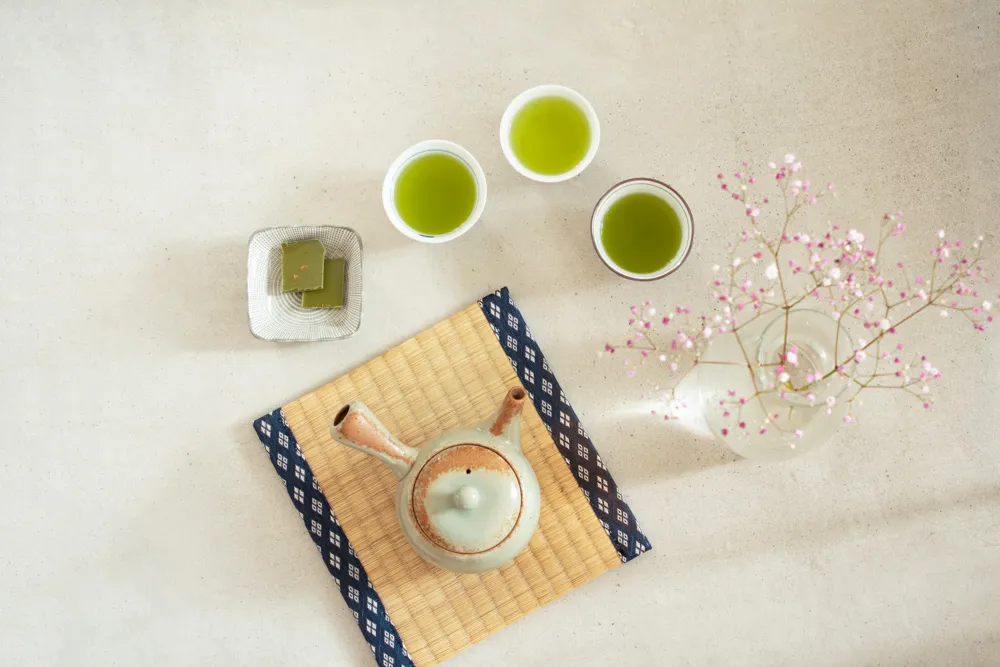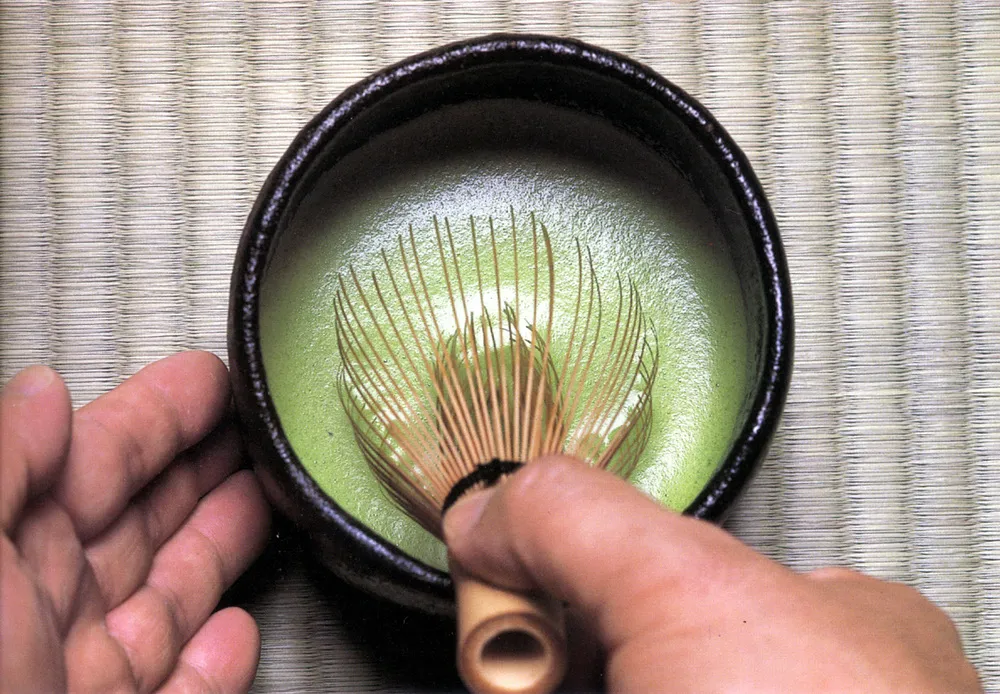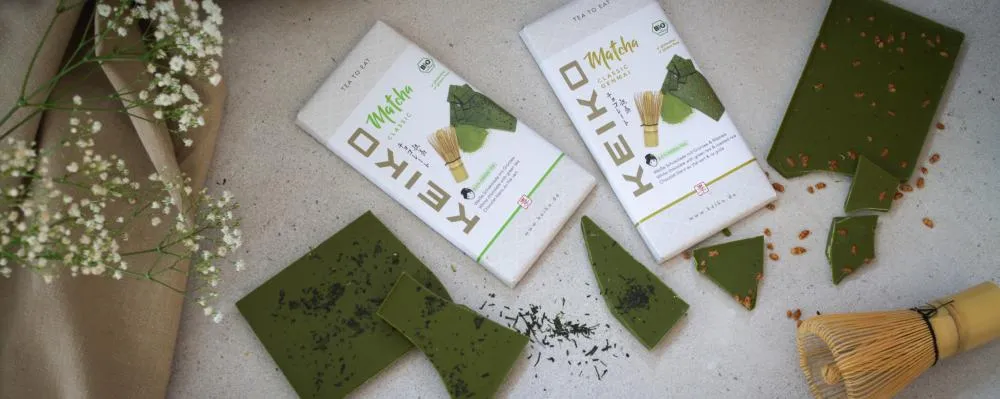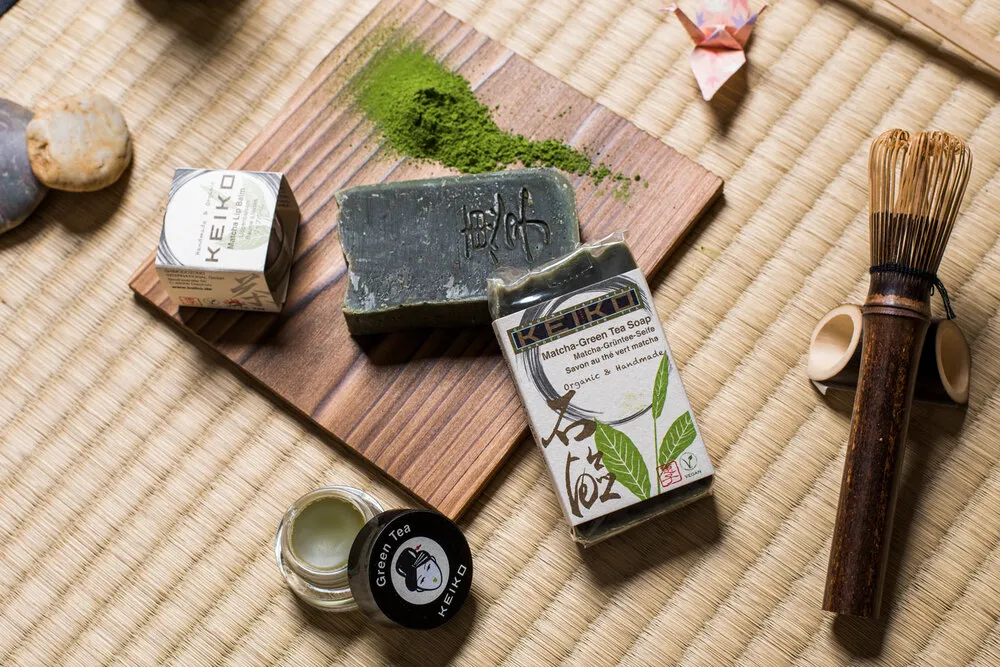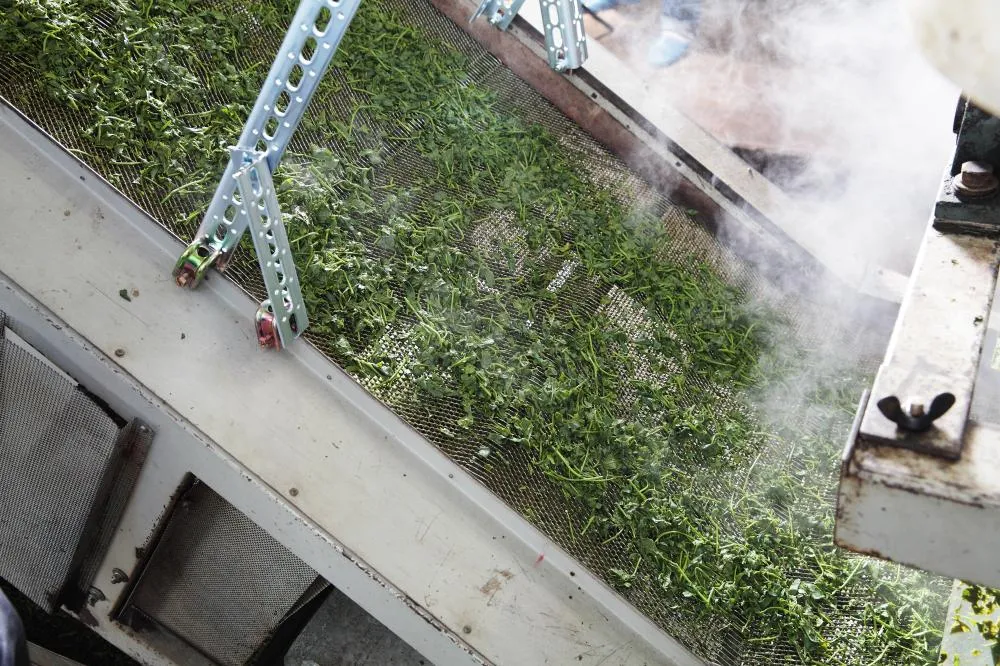
Asamushi
In the production of green tea, fermentation is stopped by heating the freshly harvested tea leaves.
The impact of the process used for this on the taste and ingredients of the tea becomes clear when comparing it to Chinese green teas, which are traditionally roasted in large pans, while in Japan a steaming process is usually used for this purpose.
These steamed Japanese teas are often simply summarised as Sencha. But even among steamed teas, there are differences depending on the strength and duration of the steaming. From the beginning, our partners at Shimodozono Japan have placed great emphasis on tickling the best possible aroma out of each tea on the one hand, and on bringing as many of the valuable ingredients of the fresh tea leaf as possible into the cup and making them available to the body on the other.
In order to achieve this, the steaming processes have been continuously developed and improved over the years. The freshly harvested tea is steamed at 100°C directly in the field.
Asamushi is the light steaming with a duration of 30-45 seconds. They usually have a clear, often yellowish cup colour and a rather light aroma compared to more heavily steamed teas. This degree of steaming is also known as futsumushi, or normal steaming, as it was the most common method for a long time, but this has shifted in recent years in favour of intense fukamushi steaming, which has gained popularity.
Asamushi teas are marked with this symbol on KEIKO tea boxes:
For more info on steaming, see our green tea blog.

